#James Stewart 1st Earl of Moray
Explore tagged Tumblr posts
Text
Ya'll want a good sword fight scene full of ton of sexual tension
Reign, Season 4, Episode 1


Just don't pay attention to the fact that the actors are playing ✨siblings✨
#Reign#Reign Edit#ReignEdit#Mary Stuart#weloveperioddrama#perioddramaedit#period drama#historical drama#enemies to lovers#With Friends Like These#James Stuart#Mary Queen of Scots#James Stewart#Adelaide Kane#Awkward-Sultana#Dan Jeannotte#James Stewart 1st Earl of Moray
32 notes
·
View notes
Text
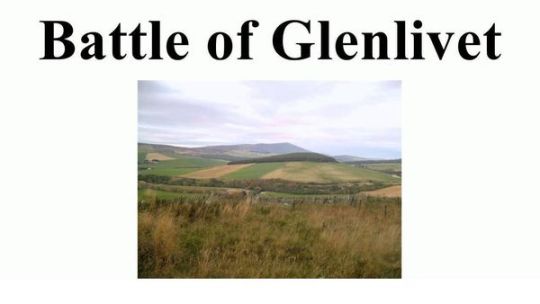
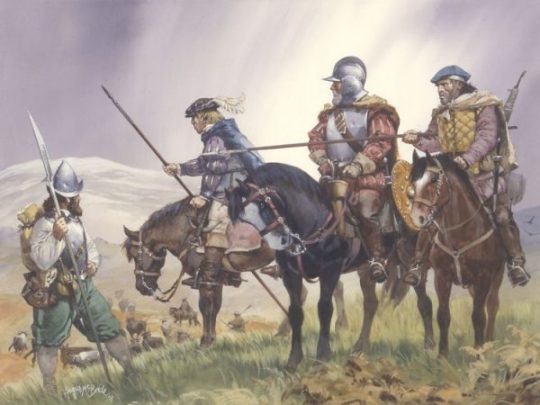
October 3rd 1594 saw the Battle of Glenlivet, George Gordon, Earl of Huntly, defeated a Royalist force under 7th Earl of Argyll.
The Battle of Glenlivet is significant as an example of the ongoing struggles within Scotland between Presbyterians and Catholics, which colours much of Scotland’s history after the Reformation, and the relentless efforts of the kirk to eliminate the Catholic faith from the country. It also highlights the complex nature of the relationships between Catholic and Protestant powers across Europe at this time. It is also significant as the first battle in the Highlands of Scotland where artillery appears to have played a part in the action, and archaeological evidence of this may well survive on the battlefield.
So was it was an all Scottish affair between the Catholic forces of George Gordon, 1st marquess of Huntly, and Frances Hay, 9th earl of Erroll, and the Protestant army of Archibald Campbell, 7th earl of Argyll., loyal to James VI.
Two years before Glenlivet, Huntly´s relationship with the King had been on a good footing, when he received a commission to apprehend James Stewart, the ´bonny´ Earl of Moray, and bring him to trial. However, Huntly was responsible for Moray´s death at Donibristle, in Fife, slashing him across the face with his sword and eliciting, allegedly, these last words from Moray; “Ye hae spoilt a better face than yer ain.”
Two years later, in 1594, Huntly was a ´Catholic rebel´. The perceived danger to Scotland was the distinct possibility of foreign support for the disenfranchised Catholics, through the intervention of Philip II of Spain. The decree of the 12th of November, 1593, by which Catholics were ordered to give up their faith or leave the Scotland, contributed to significant unrest and Huntly refused to comply.
The earls of Argyll and Atholl were commissioned with the Lieutenancy of the North to deal with rebel Catholics such as Huntly. This programme of suppression escalated into a campaign, led by Argyll, against Huntly and other rebel lords and clan allies. The two sides encountered one another on a hillside near Ben Rinnes, where Huntly had laid an ambush for Argyll as he climbed the hill. In the battle Huntly used his horse to great effect in the confined space of a pass and entirely routed Argyll´s troops. The king´s forces were unable to withstand the cavalry lances and were driven off the hill. During that panic-stricken retreat, they are said to have thrown their weapons into a small lochan, which became known as ´The Loch of the Swords´. According to one tradition a weeping Argyll was led from the field.
19 notes
·
View notes
Text
BBC Bloody Queens Elizabeth I and Mary of Scots
Drama reveals the intimate and ultimately deadly relationship between Queen Elizabeth I and Mary, Queen of Scots, using the words of the two queens and their courtiers.


In the beginning, they never met one another in real life for Mary was in France at the time and widowed to returning Scotland. In fact, the only evidence they had was letters. At first, they happily greeted each other and friendship started out. Even friendly called each other sisters. Their childhood and life couldn't be more opposites than ever. However, after many faults, their once friendly letters became hints of jealousy, betrayal, and mystery between the two women began to grow animosity. And question is was Mary innocent? Or did Elizabeth fall for a trap that made her decision to execute her cousin?

Mary was her father's only daughter and became for six days. She grew up with love and luxuries in life. Her days were full of happiness. She went to France to marry Dauphin of France name Francis I son of Henri II and Catherine De Medici. She was the happy yet spoiled princess who grew up believing that she was the heir to England. Sadly she was a widow and was ordered by her mother-in-law to leave France and return to Scotland. Her suffering and test of faith were not over. Scotland became a Protestant country and Mary a well-known Catholic is their queen. It makes the Protestant lords uneasy. Outspokers like John Knox were highly against Mary being queen. For not only being a catholic but she was a woman. Worse, to Scots, she was a foreign woman. A French woman who ruled the hard blood land Scotland. However, Mary had this attitude that she was queen because it was given right from her birth which made her ruler of Scotland. She started to order people around and was a stubborn woman who would say, "No I am the queen and you are my servant." Or "You will have to do as I say goes." As if she was stomping her feet. But Mary wasn't in court without friends. David Rizzio her secretary and Italian courtier also a musician was her favorite and close friend to Mary. Her half-brother was born from her father's mistress, James Stewart, 1st Earl of Moray whom the nobles that converted to protestant even Moray respected him. But Mary's trouble continues the downfall of her quest. Marriage. First, her hand was appointed by Elizabeth I in a deal that she would recognize Mary as her heir if she married a protestant Lord Robert Dudley, 1st Earl of Leicester.

However, Mary was not only insulted but felt anger that Elizabeth would back on their deal. So, Mary decides she needs a catholic, better position to help her claim better for England.

Henry Stuart Lord Darnley, her cousin born from He was the second but eldest surviving son of Matthew Stewart, 4th Earl of Lennox, by his wife Lady Margaret Douglas, which supported his claim to the English succession. Darnley's maternal grandparents were Archibald Douglas, 6th Earl of Angus, and Queen Margaret Tudor, daughter of King Henry VII of England and widow of King James IV of Scotland. Mary fell instantly in love with his good looks and flattery attitude. But noooo. Not him. Anyone but Darnely. For he is not only the grandson of King Henry the Seventh as Mary's blood. But that was Elizabeth's only concern for that. The Scottish lords did not like Darnely because he was the male version of Mary per se. Plus, he was a drinker, vain, spoilt, womanizer, violent temper, and homosexual as well. Mary was in love with Darnely and ignored such "rumors" as she calls them. That is until after marriage with him. he revealed his true colors as Mary was pregnant at the time, but sent letters to Elizabeth to help her. Sadly Elizabeth was advised not to involve a queen's marriage troubles as this was a personal matter. Mary's trouble did not end there. After killing Rizzio for believing that he is the father of her child since she hasn't allowed Darnely near her. Probably fear the risk of miscarriage. That was when Mary took back power and locked Darnely away in his castle where he died in mysterious circumstances. The house exploded, but he survived before being strangled to death. And guess who was the suspect.
James Hepburn, 4th Earl of Bothwell.

Mary is not only widowed the second time, but she marries the possible murder of her husband. Now the lords had no love for Darnley, but his death seemed a bit off as Mary quickly married to Bothwell. Even drew pictures of Mary as a mermaid. Not a compliment mind you. In Scotland, it means whore or seductress. And Mary's reputation went from bad to worse. She rebelled again and this time both Catholics and Protestant lords wanted Mary out of the throne and placed her son James to be king of Scotland and they wanted Moray to be his regent.

Moray had imprisoned Mary and she was separated from both her son and Bothwell who escaped. But the worst is yet to come, Mary had suffered a miscarriage and it was Bothwell's twins. It was horrifying for Mary. They forced her to abdicate either by her vulnerability of losing her miscarriage or threat. Either way, Mary has lost her crown. Mary had strength and a chance to escape. Elizabeth was her thought of helping her get her crown. Wrong again Mary.

Elizabeth was born to Henry VIII and Anne Boleyn. However, her birth was met with scorn by both Catholics and hatred for the Boleyns. However, it was mostly because of the actions her father, mostly her mother had done. he divorced his first wife and married Anne Boleyn to gain a son. Instead, he had a daughter.

She was beloved by her parents, but Anne Boleyn was beheaded under the guise of treason and saw Jane Seymour as his new replacement queen.

Since then her life suffered as now declared bastard or illegitimate as her older sister Mary daughter of Catherine of Aragon the first wife of Henry VIII.

Elizabeth suffered at the hands of her enemies and was accused of treason which included prison during both her siblings' reigns. But she survived it all even treason plots that brought up her name. And never know who to trust.

She never knew peace nor rest for she knows her enemies are lurking to destroy her. She had to play a game that had two chances life and death.
Her greatest enemy is Mary Stuart, Queen of Scots. When Mary had escaped from Scotland and abdication her crown in favor of her son, James. Elizabeth refused to see her cousin as instructed that she must be sent away and be locked up in comfort as her presence endangered Elizabeth's life. Mary was struck with another heat felt like a betrayal again. For Elizabeth hearing about Mary's reputation back in Scotland that gave Elizabeth the decision to never marry seemed like a good idea compared to Mary. Despite Mary's insistent that she is innocent. Mary claimed that she was kidnapped and was raped by Bothwell. That is why she had to marry him to protect her honor.

William Cecil was very loyal to Elizabeth and a firm protestant reformer. He wants Mary dead, but Elizabeth cannot do it. No one would know why. But it could be a reminder of how she lost her mother Anne Boleyn and Katherine Howard who were queens yet executed by the king's pleasure? Or fear of possible invaders who would use Mary's death to dethrone? Either way, Elizabeth would have to be forced as Willaim Cecil found evidence and proof that Mary was part of a coup to take Elizabeth's life and the crown. This angers Elizabeth as she will never go back to the time when she had to suffer at the hands of her enemies and the injustice was ignored. So, two versions said that Elizabeth was pressured by Willaim Cecil and her spymaster Francis Walsingham that there were new plots that were going to break Mary out and have a secret army waiting for her in France or other countries.

Another version said that she did sign it, but changed her mind as she wanted to spare Mary. Though, time was against Elizabeth. It's either her life or Mary's. She cannot have both ways. Mary was tried and found guilty. Then ordered her to be beheaded for treason. Though stories show she made one final defiant as a queen. She wore a red dress a symbol of martyrism. And three times it take to chop her thick neck. The executioner took her head, but her hair was a wig and her head flew off to the side. Finally, her pet dog was hiding under her dress yapping and covered in her blood.

Well, there you go folks the background and queens who were opposite to each other lives. However, tied by fate as they would someday play the role of life and death. The grand prize for the winner was the crown of England which remained with Elizabeth I for the next 44 years after she triumphed over the Spaniard armada and the final enemy who came close to Elizabeth but she remained undefeated.
After her death, the crown did not go to Mary as planned, but it went to her son James Stuart who became the first monarchy to Scotland and England finally united the two kingdoms into the great nation that is today.
#tudors#Stuarts#history#elizabeth i#mary queen of scots#lord darnley#lord Bothwell#David rizzio#Willaim Cecil#Francis Walsingham#anne boleyn#catherine of aragon#mary i of england#henry viii
1 note
·
View note
Text
Events 1.23 (before 1920)
393 – Roman emperor Theodosius I proclaims his eight-year-old son Honorius co-emperor. 971 – Using crossbows, Song dynasty troops soundly defeat a war elephant corps of the Southern Han at Shao. 1229 – The episcopal seat is moved from Nousiainen to Koroinen (located near the current centre of Turku) by the permission of Pope Gregory IX. The date is starting to be considered as the founding of Turku. 1264 – In the conflict between King Henry III of England and his rebellious barons led by Simon de Montfort, King Louis IX of France issues the Mise of Amiens, a one-sided decision in favour of Henry that later leads to the Second Barons' War. 1368 – Zhu Yuanzhang proclaims himself the Hongwu Emperor, beginning the Ming dynasty. 1546 – Having published nothing for eleven years, François Rabelais publishes the Tiers Livre, his sequel to Gargantua and Pantagruel. 1556 – The deadliest earthquake in history, the Shaanxi earthquake, hits Shaanxi province, China. The death toll may have been as high as 830,000. 1565 – The Deccan Sultanates defeat Rama Raya of the Vijayanagara Empire at the Battle of Talikota, resulting in over 100,000 casualties and the destruction of the capital Vijayanagara. 1570 – James Stewart, 1st Earl of Moray, regent for the infant King James VI of Scotland, is assassinated by firearm, the first recorded instance of such. 1571 – The Royal Exchange opens in London. 1579 – The Union of Utrecht forms a Protestant republic in the Netherlands. 1656 – Blaise Pascal publishes the first of his Lettres provinciales. 1719 – The Principality of Liechtenstein is created within the Holy Roman Empire. 1789 – Georgetown College, the first Catholic university in the United States, is founded in Georgetown, Maryland (now a part of Washington, D.C.) when Bishop John Carroll, Rev. Robert Molyneux, and Rev. John Ashton purchase land for the proposed academy for the education of youth. 1793 – Second Partition of Poland. 1795 – After an extraordinary charge across the frozen Zuiderzee, the French cavalry captured 14 Dutch ships and 850 guns, in a rare occurrence of a battle between ships and cavalry. 1846 – Slavery in Tunisia is abolished. 1849 – Elizabeth Blackwell is awarded her M.D. by the Geneva Medical College of Geneva, New York, becoming the United States' first female doctor. 1870 – In Montana, U.S. cavalrymen kill 173 Native Americans, mostly women and children, in what becomes known as the Marias Massacre. 1879 – Anglo-Zulu War: The Battle of Rorke's Drift ends. 1899 – The Malolos Constitution is inaugurated, establishing the First Philippine Republic. Emilio Aguinaldo is sworn in as its first president. 1900 – Second Boer War: The Battle of Spion Kop between the forces of the South African Republic and the Orange Free State and British forces ends in a British defeat. 1904 – Ålesund Fire: The Norwegian coastal town Ålesund is devastated by fire, leaving 10,000 people homeless and one person dead. Kaiser Wilhelm II funds the rebuilding of the town in Jugendstil style. 1909 – RMS Republic, a passenger ship of the White Star Line, becomes the first ship to use the CQD distress signal after colliding with another ship, the SS Florida, off the Massachusetts coastline, an event that kills six people. The Republic sinks the next day. 1912 – The International Opium Convention is signed at The Hague. 1919 – The First Regional Congress of Peasants, Workers and Insurgents is held by the Makhnovshchina at Velykomykhailivka.
0 notes
Text
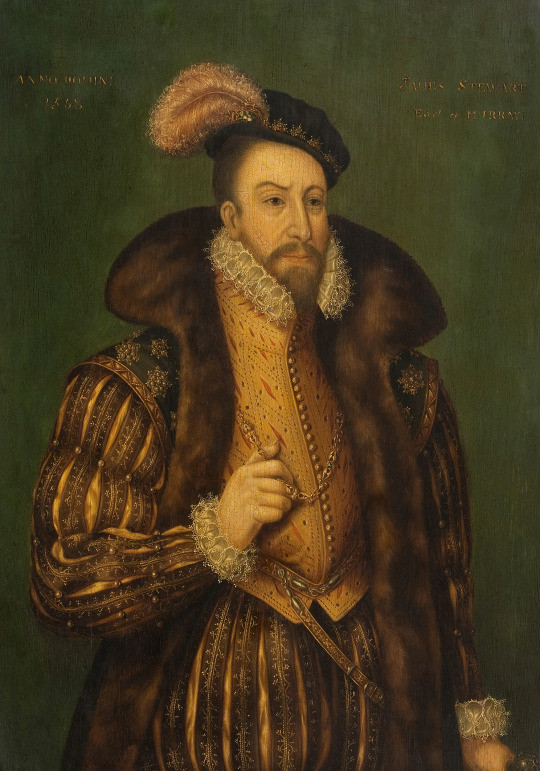
James Stewart (c. 1531-1570), 1st Earl of Moray and Regent of Scotland. Unknown artist.
#kingdom of scotland#house of stuart#royal bastards#james stewart#house of stewart#earl of moray#regent of scotland#Rìoghachd na h-Alba#Kinrick o Scotland#Kongungdum Skotland
1 note
·
View note
Text
First Head Of Government To Be Assassinated With A Firearm
On January 23, 1570, James Stewart, the 1st Earl of Moray, was assassinated. At the time he was the Regent of Scotland, and thus earned himself the unwanted record of being the first government principal anywhere to be assassinated by a firearm.
James Hamilton of Bothwellhaugh and Woodhouselee was a Scottish supporter of Mary, Queen of Scots, who assassinated James Stewart, 1st Earl of Moray, Regent of Scotland, in January 1570.
He shot Moray from the steps of his uncle Archbishop John Hamilton's house in Linlithgow.
Bothwellhaugh Carbine
James Hamilton used a carbine of 3 feet 5��inches (104 cm) length and a hexagonal bore barrel of 2 feet 5 inches (74 cm) length. The stock was inlaid with a deer feeding and at the butt had the usual covered container for storing bullets.
1 note
·
View note
Photo

His Serene Highness The Count of Münnich and Reutern wishes everyone a very Happy Burns Night!
The Count (L) pictured at the Burns Night Supper with historian and College of Arms genealogist, Dr Andrea Tanner (R ) on 25th January 2018 at Fortnum and Mason in London, England.
The Count has a historical and genealogical connection to Scotland from his father to his 13 times-great-grandfather, James Stewart, 1st Earl of Moray, Regent of Scotland.
#Joshua Wood#The Hon Joshua Dylan Wood#Joshua The Count of Reutern#Count Joshua of Reutern#Count Joshua von Reutern#The Count of Reutern#Graf von Reutern#Joshua Graf von Reutern#Reutern#von Reutern#Comte de Reutern#Il Conte di Reutern#Dr Andrea Tanner#burns night#burns night supper#fortnum and mason#scottish#James Stewart 1st Earl of Moray#Regent of Scotland#Scottish Royal Connection#member of the royal family#Royal Family#British Royal Family#english aristocracy#German aristocracy#aristocrat#nobility#british nobility#german nobility#scottish nobility
0 notes
Photo
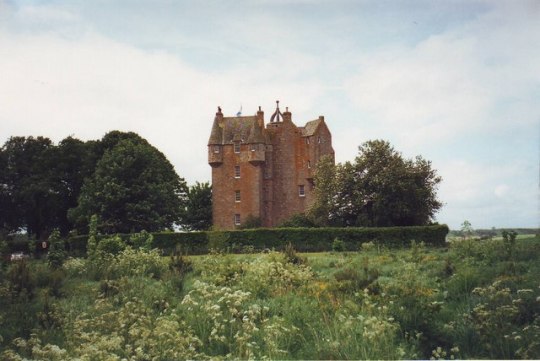
Castle Stuart is a restored tower house on the banks of the Moray Firth, about 6.5 miles (10 km) northeast of Inverness.
The land the castle was built on was granted to James Stewart, 1st Earl of Moray by his half-sister, Mary, Queen of Scots, following her return to Scotland in 1561. The successive murders of Stewart and his son-in-law, James Stewart, 2nd Earl of Moray, meant that the castle was finally completed by his grandson, James Stuart, 3rd Earl of Moray, in 1625.
Though the castle initially flourished, it fell into disuse as the fortunes of the House of Stuart sank during the English Civil War and Charles I was executed. The castle lay derelict for 300 years before being restored; it is currently used as a luxury hotel.
#Castle Stuart#xvii century#castle#landscape#Scotland#highlands#scottish highlands#photo#photography
11 notes
·
View notes
Text
International Queens/Empress Consorts (1/?)
Margaret Tudor, Queen of Scotland (28 November 1489-18 October 1541)
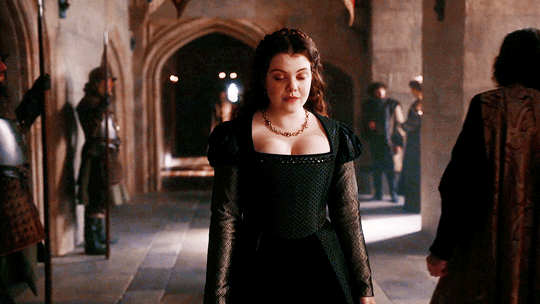
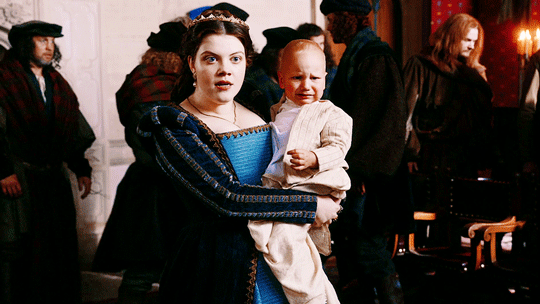
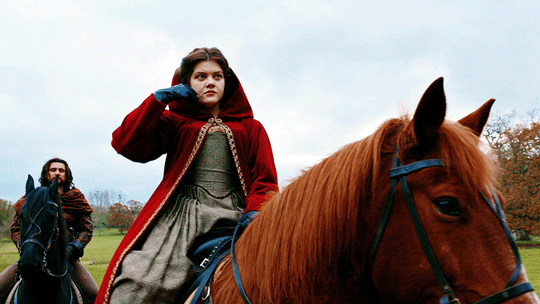
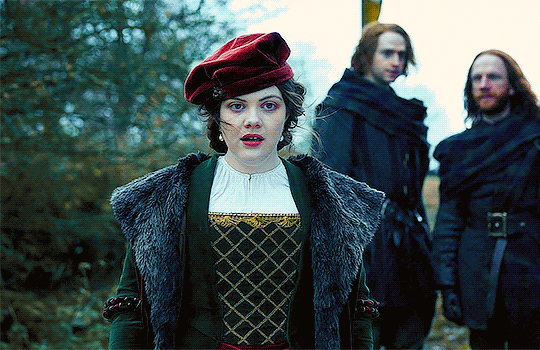
Daughter of King Herny VII and Elizabeth of York
Mother of James Stewart (Duke of Rothesay), Arthur Stewart (Duke of Rothesay), James V or Scotland, Alexander Stewart (Duke of Ross), Margaret Stewart (Countess of Lennox) and Dorothea Stewart
Wife of James IV of Scotland (m. 1503; died 1513), Archibald Douglas, 6th Earl of Angus (m. 1514; div 1527), and Henry Stewart, 1st Lord Methven (m. 1527)
Mother-in-law of Madeleine of France, Mary of Guise, and Matthew Stewart, 4th Earl of Lennox
Grandmother of James (Duke of Rothesay), Athur or Robert (Duke of Albany), Mary Stuart (Queen of Scots), James Stewart (Commander of Kelso and Melrose), James Stewart (1st Earl of Moray), Adam Stewart (Prior of Perth), James Stewart, John Stewart (Commander of Coldingham), Jean Stewart, Robert Stewart (1st Earl of Orkney; Commander of Holyrood), Henry Stewart (Lord Darnley), and Charles Stuart (1st Earl of Lennox)
6 notes
·
View notes
Text
Lords and Lairds and Ladles
And while I’m on the subject of names and titles, it’s worth pointing out another easily mixed up custom that prevailed until at least the end of the sixteenth century (and probably later, it’s not my specialty).
If you were a nobleman whose surname happened to be ‘Kennedy’ or ‘Douglas’ or ‘Gordon’, that does not mean that you would necessarily be referred to as Lord Kennedy or Lord Douglas or Lord Gordon. Those are very specific titles which belong to specific members of those families.
You MIGHT be referred to as ‘my lord’ as like an honorific, if you were a nobleman or a bishop or an abbot- for example, ‘my lord of Aberdeen’ would be the bishop of Aberdeen while ‘my lord of Murray’ could be either the bishop of Moray (most likely) or the earl of Moray (less likely, but still happened) or, very rarely, a nobleman with the surname Murray. However none of these people would hold the official title ‘Lord Aberdeen’ or ‘Lord Murray’, nor should they be referred to as such.
Sometimes contemporary sources do make mistakes- in particular English diplomats often got mixed up when referring to Scottish nobles, and they might, for example, refer to any male member Kennedy family as ‘Lord Kennedy’, even if they didn’t mean the person who actually held that title. But it does not seem to have been common practice back in the fifteenth and sixteenth centuries, and it certainly isn’t correct to refer to sixteenth century noblemen who didn’t hold a lordship of parliament using those titles in modern historical writing.
I am not au fait with English titles, but it seems that, nowadays, historians generally use the title ‘lord’ much more flexible- I have seen multiple members of the Howard family, alive at the same time, referred to as ‘Lord Howard’ in secondary sources. Whether that was actually the custom in the 16th century I don’t know, but certainly nobody seems to bat an eyelid now.
But as a general (flexible) rule, Lord Hamilton is the man who has been specifically granted the title, not just any nobleman with the surname Hamilton. In 1503, Lord Drummond refers usually to John, 1st Lord Drummond, not any of his sons, and not one of the lairds of Innerpeffray who also bore the surname Drummond. There is a level in the Scottish peerage known as being a ‘lord of parliament’ and these lordships of parliament are an important concept, if sometimes complex.
This is also why laird and lord are not exact synonyms. Yes laird initially stems from the concept of being someone’s lord, and most lords of parliament were also lairds (as were earls and dukes). Sometimes in poetry and prose you will find lord spelt like laird. But in a strict sense, lairds are a lower level of the nobility than the men called ‘Lord’- although lots of lairds, especially those employed at the royal court, could be influential too.
But when speaking plainly Lord Hume does not usually mean the same thing as ‘Laird Hume’. For example Alexander Hume, 3rd Lord Hume, who got his head cut off in 1516 was ‘Lord Hume’- he held the lordship of parliament and, though some might have disagreed, he would probably be thought of as representing the senior line of the family. Several of his kinsmen who bore the surname Hume were lairds though, such as the laird of Cowdenknowes and the laird of Wedderburn. Technically, Lord Hume was a laird too, in the explicit sense of someone who holds lordship over others. But a laird tended to be an ill-defined and lower level of lordship. Calling Lord Hume ‘Laird Hume’ would be like referring to the Duke of York solely by his knightly title Sir Edmund of Langley- he was both, but one of those is his highest title and the other is merely a subsidiary extra.
Hence how James Hamilton, 6th Laird of Cadzow is created, in 1445, James, 1st Lord Hamilton. His son was later created Earl of Arran in 1503. But while the Hamiltons were an important, large, and influential kindred, this did not mean that other male members of the family were Lord Hamilton. Sometimes they might be Lord Hamilton of XXX (a location) or given another title altogether like Lord Paisley (for Claud Hamilton, third son of the 2nd Earl, in 1587).
Alternatively Alexander Gordon, 2nd Lord Gordon, was made Earl of Huntly in 1457. In the sixteenth century we often find the eldest legitimate sons and heirs of the Earls of Huntly bearing the title Lord Gordon. Alternatively, they could be known as the ‘Master’ of Huntly, a common term indicating that the holder was the heir to the estate. But younger sons were not generally referred to as ‘Lord Gordon’ unless they had been granted possession of that lordship by the Earl of Huntly or someone with equal authority- for example, if they were the heir apparent while their older brother was childless. Otherwise they were usually just ‘my lord James Gordon’, or ‘Sir Adam Gordon of Auchindoun’ or ‘Alexander Gordon, the Laird of Lochinver’.
As for their ladies, both lords and lairds’ wives might be referred to as lady, but in slightly different ways. So, had she not already borne a title from her first marriage (Countess of Bothwell), the wife of Alexander, 3rd Lord Hume would have been “Agnes Stewart, Lady Hume”. However the wife of Lord Hume’s distant kinsman David Hume of Wedderburn would be “Alison Douglas, the Lady of Wedderburn”, and the wife of the laird of Cowdenknowes would be perhaps “[Dame] Elizabeth Stewart, [the] Lady [of] Cowdenknowes”. Obviously full names were not always given, and bits and pieces get added and taken away, this was just to give a rough idea.
DAUGHTERS on the other hand are never Lady Hume or Lady Elphinstone, unless they inherited the lordship. Lord Erskine’s wife is Lady Erskine, but his daughters are not all Lady Erskine as well, though they might become ladies of their husband’s title- Margaret Erskine, Lady of Lochleven because she married the laird (not lord) of Lochleven. Though their first name might be put in there to make it easier- Lady/Mistress Barbara Hamilton for example, who then becomes ‘Dame Barbara Hamilton, Lady Gordon’ or Lady Janet Stewart/Mistress Stewart who becomes ‘Dame Janet Stewart, Lady Fleming’ but never just Lady Stewart.
The way people are ‘referred’ to in sources from sixteenth century Scotland is very fluid and flexible (and it doesn’t help that a lot of sources are from English or French writers who didn’t know the difference anyway). But from a modern perspective there are just certain unwritten rules. They’re generally easier to pick up naturally through reading primary and secondary sources than to explain exactly. The concept of a ‘laird’ is often confusing and ill-defined, but a lordship of parliament on the other hand meant something. Lord Crichton was not the same as Lord Crichton of Sanquhar, and certainly not the same as any number of lairds or younger sons who had the surname Crichton but held lands that weren’t associated with the lordship of parliament. Lord Lindsay of Crawford referred to the men who became earls of Crawford, but there was also Lord Lindsay of the Byres, and then a bunch of lairds and knights like Sir David Lindsay of the Mount who shouldn’t strictly be called ‘Lord Lindsay’. Stewart of Innermeath, Stewart of Darnley (later son of the earl of Lennox) and Stewart of Ochiltree all held lordships of parliament, but usually they would be referred to as Lord Innermeath, Lord Darnley, and Lord Ochiltree, even if theoretically they were all Lords Stewart. Then there’s a whole host of minor branches of the Stewart family whose heads can loosely be described as lairds, not lords. And in the plural, for example when referring to the political community, people usually refer to the Scots lords (as in the ‘lords of the parliament’ or ‘lords of the council’) not the Scottish lairds.
And then of course churchmen come along and mess everything up even further, but we won’t get into that.
#It's messy and much easier to just Get once you've done a bit of reading and absorbed the info by osmosis#This is not strictly in line with strict heraldic titles of the 21st century#But if I see one more butchered title in a popular novel or history book I will scream#That being said I know it's a pain so I can answer questions if anybody has any#Can't promise I'll always be 100% correct but there's a good chance
5 notes
·
View notes
Text
9th September 1543- Coronation of Mary I of Scotland

On 9th September 1543, the coronation of Mary I of Scotland took place in the Chapel Royal of Stirling Castle. An infant of barely nine months, she had been recognised as the kingdom’s next monarch at just six days old, after the premature death of her father King James V, leaving no other legitimate heirs of his body. She had been described as queen of Scotland in most official government documents since, but her official coronation was preceded by nine months of political intrigue and tension, culminating in a double-edged triumph for the faction led by her mother, Mary of Guise, and Cardinal Beaton.
The little queen had been resident in Stirling for just over a month. At the end of July 1543, her mother, the dowager queen Mary of Guise, supported by Cardinal Beaton along with the Earls of Huntly, Argyll, Lennox, Bothwell, Sutherland, Menteith, lords Erskine, Ruthven, Fleming, Crichton, Drummond, Lisle, Hume, the bishops of Moray, Orkney, Galloway, Dunblane, and several thousand others, had finally succeeded in removing her from her birthplace in the palace of Linlithgow. This was achieved in the face of opposition from the Governor of Scotland, James Hamilton, Earl of Arran. Arran was the infant queen’s 27 year old cousin and the official head of the Scottish government as regent and the next in line to the throne. As he was then pursuing a pro-English policy, and also had reason to view both the dowager queen and Cardinal Beaton as rivals, in early 1543 he had had the Cardinal arrested and forbade Mary of Guise to leave Linlithgow for the greater protection of Stirling. However, following the Cardinal’s escape and the return of the Earl of Lennox from France in 1543, the opponents of the Governor (or at least the opponents of his policy in favour of an alliance with England) gathered an army and marched on Linlithgow. After several days of stalemate and negotiation, with the army sitting outside the palace walls, Arran had been forced to climb down and allow the little queen and her mother to leave.
The sudden flitting of the queen was an even greater source of displeasure to Henry VIII of England when he heard of it, as the English king had not only wished to marry her to his son the Prince of Wales, but had also wanted the queen to be kept in England until the marriage could take place. This would have served as a useful means of keeping the Scots in check, and anyway, despite their promises, he certainly did not trust her French mother to follow through with the English marriage, much less the wily pro-French and militantly Catholic Cardinal Beaton. Linlithgow would have suited Henry better as then there was at least a chance that one of the Scottish nobles he had attempted to suborn, or even an English invasion, would have been able to abduct the young queen from the beautiful, yet low-lying and relatively unprotected lochside palace. Stirling Castle was another matter entirely: perched on its high rock with a commanding view of the surrounding country, its Renaissance embellishments had not diminished its status as a formidable fortress, the veteran of many bitter Anglo-Scottish conflicts. Nevertheless, Henry VIII could live in hope. The Treaty of Greenwich might yet be ratified to his satisfaction, and the Scottish nobles who favoured alliance with the English king, whether for political or religious reasons, had managed to bring the Governor Arran round to his point of view, which lent their policy official authority.
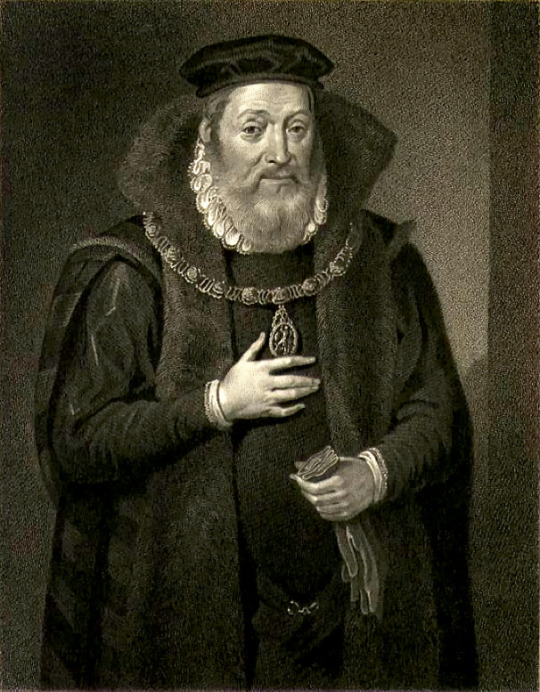
(An engraving of the Earl of Arran in his later years, and probably his most famous picture, which tends to obscure the age he was when he became Regent. Not my picture)
But any plan which rested on the consistent cooperation of the chronically indecisive Governor Arran could hardly be called secure. The Governor was already under pressure from his half-brother John Hamilton, Abbot of Paisley, an ardent Catholic who had recently returned from abroad and set about putting the fear of god into his pliable younger sibling over Arran’s recent support of Protestantism. Meanwhile the mood of the country was also shifting, and the English alliance was becoming increasingly unpopular, not least due to the disturbing effects of religious unrest in Scotland and Henry VIII’s not so thinly veiled intimidation tactics. Arran’s allies soon had reason to become wary of his behaviour and watched his movements closely. On 1st September 1543, the English Ambassador Sir Ralph Sadler wrote to his king and said of the Governor that, “he abides not long in one mind, and Sir George Douglas tells me that he much fears the Governor’s revolt, now that things grow to extremity, and that there is a great likelihood that this division will not be ended nor exterminated but by the sword. The Governor is so afraid, of so weak spirit, and faint hearted, that (...) he fears he will never abide the extremity of it, but will rather slip from them and beastly put himself into the hands of his enemies, to his own utter confusion.”
The Earl of Arran’s anxiety was perhaps understandable. He might have feared for his position as governor if the Stirling lords decided to choose a different governor at the coronation, as the event could serve as a major political coup for Cardinal Beaton and the dowager queen. Or perhaps it was the presence of the Earl of Lennox at Stirling which disturbed Arran as Lennox had a rival claim to be next in line to the throne. Perhaps, indeed, as Marcus Merriman argues, Arran was acting with uncharacteristic farsightedness, seeing that the collapse of the English marriage was inevitable almost immediately after the queen’s removal to Stirling, and yet delaying his defection long enough to put off English invasion until the harvest had been brought in and the best time for campaigning had passed. Although Arran ratified the Treaty of Greenwich which promised Queen Mary’s hand to Henry VIII’s son on 25th August 1543, this was to be the high watermark of his active support for the English alliance. Despite the English king’s last-ditch offer of a marriage between his daughter, Princess Elizabeth, and Arran’s son, and despite the careful watch set by his former allies and the blandishments of his own wife Margaret Douglas, Arran changed sides in the first week of September. On Monday 3rd September, he slipped away to Blackness Castle on the Forth, claiming that his wife was in labour there. But the next morning Arran departed from the castle again, leaving Margaret weeping tears of rage at his inconstancy, and he soon covered the ten miles or so to Lord Livingston’s residence at Callendar House, on the edge of Falkirk. There he met with the wily Cardinal Beaton and the Earl of Moray (the infant queen’s uncle), and after long discussion accompanied them back to Stirling that night.
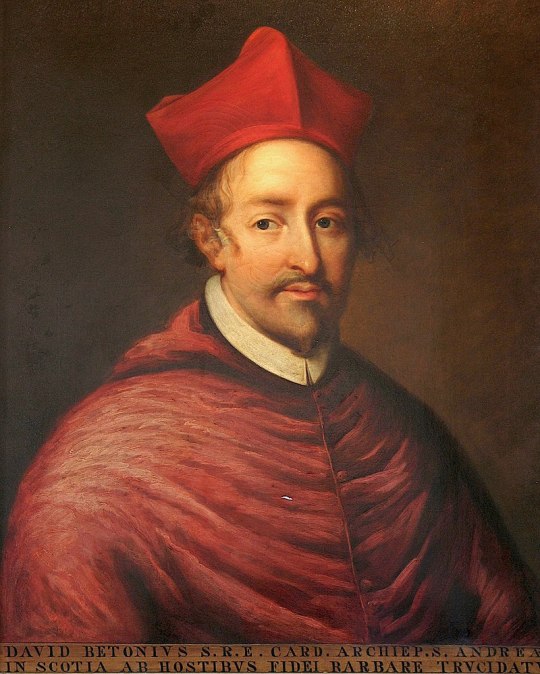
(An eighteenth century copy of a portrait of David Beaton, Archbishop of St Andrews and Cardinal. Not my picture)
With the Governor’s ‘revolt’ accomplished, there was much to be discussed between Arran and his new, if not exactly beloved, allies. Arrangements had to be made for the secure keeping of the queen’s person during her time at Stirling, and also for the bairn’s coronation which was set for the coming Sunday, the 9th of September. Letters were sent to those recalcitrant Scottish nobles who- whether for reasons of religion, sound policy, or personal gain- had favoured the English marriage, asking them to attend the coronation. And there was spiritual work to be done as well: the lords at Stirling having agreed that Arran was “accurst” , it was determined that he should do penance for his previous flirtation with Protestantism. This was performed on Saturday the 8th of September in Stirling Greyfriars, when the earls of Bothwell and Argyll held the ‘towel’ over the humbled Governor’s head as the Cardinal and other bishops solemnly absolved him of his sin.
The coronation was due to take place early the next day, and the inner close of Stirling Castle must have been a hub of activity that September morning. The Chapel Royal, in which the event was to be held, stood on the north side of the close, forming a quadrangle with the King’s Old Buildings to the west, the magnificent Great Hall constructed by James IV to the east, and the mint-new royal palace (begun by Queen Mary’s father James V and to be completed by her mother over the next few years) standing to the south. The Chapel itself stood a little to the south of the current chapel (built by Mary’s son James VI in 1594) which now occupies the spot. It had been founded by James IV in 1501 and would witness several royal christenings and other notable events over the course of its short history. Perhaps most poignantly, it had also been the site of the coronation of Mary’s father James V, almost thirty years earlier in September 1513. This was the so-called ‘Mourning Coronation’ and the king on that occasion had also been little more than an infant. Had anyone called to mind this other coronation thirty years later, they might also have realised that the 9th of September 1543 was itself a significant date, being the thirtieth anniversary of the disastrous Battle of Flodden. This battle had caused the death of the new queen’s grandfather King James IV (also the Earl of Moray’s father and Huntly’s grandfather), her uncle Alexander Stewart who was one of Cardinal Beaton’s predecessors as Archbishop of St Andrews, the grandfathers of the earls of Lennox and Argyll, the father of the Earl of Bothwell, and countless other Scots of all classes. If anyone noticed this singularly inauspicious date however, it does not seem that it was allowed to throw a sombre shadow over proceedings.
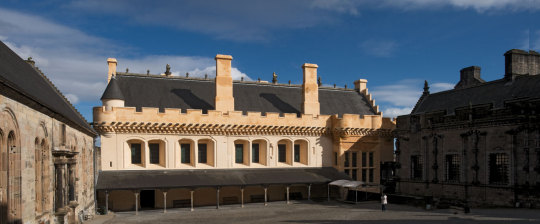
(The only view I could find of most of the Inner Close of Stirling Castle- James V’s palace is to the right, James IV’s Great Hall in the centre, and on the left can be seen parts of the current Chapel Royal, built in 1594 by Mary’s son James VI almost on the same site as the Chapel Royal where she was crowned. Not my picture.)
Not much is known about the details of the coronation itself, which took place around ten o’clock in the morning, once the assembled lords and ladies had filed into the Chapel Royal. The Treasurer’s Accounts are unusually silent about the occasion, though it was probably carried out with as much propriety and careful observance of etiquette as was possible given the circumstances. We do know that Cardinal Beaton presided over the ceremony, and that the Earl of Arran bore the Crown, the Earl of Lennox the sceptre, and the Earl of Argyll the sword. These precious royal items- now known as the Honours of Scotland and still to be seen in Edinburgh Castle- each had their own story. The sceptre and sword had been gifted to King James IV by two separate popes, while the crown was of dubious but likely ancient origin (give or take a few meltings) possibly stretching back to the days of Robert Bruce, and it had been refashioned as recently as 1540 on the orders of Mary’s father. A heavy crown for a bairn, it was probably held above her head. There is a tradition that the infant queen cried all through the ceremony but otherwise the coronation went off without a hitch.
In terms of coronation festivities, it must be said that even when taking into account the natural bias of the English ambassador, and the fact that he was not at the coronation himself (being unable to stray far from his house in Edinburgh without fear of the mob), it is hard to disagree with his assertion that Queen Mary was crowned, “with such solemnity as they do use in this country, which is not very costly”. There were to be no ceremonial entries, no elaborate pageantry such as had been planned for the coronations of James V’s consorts in the 1530s. As with most other recent Scottish coronations, which had a funny little knack of coming at the worst possible moment to kings who had hardly reached knee height, simple dignity was probably the order of the day. The late-sixteenth century writer Robert Lindsay of Pitscottie does state that the guests retired after the coronation and occupied themselves in dancing and merry-making however, so possibly there was more cheer than the records indicate.
There was also no escaping from the harsh reality of the political situation. This coronation had been a political triumph for Cardinal Beaton and Mary of Guise and their supporters, but there were notable absences, not least the Earls of Glencairn, Cassilis and Angus, Lord Maxwell and the other lords still considered to be of the ‘English’ party. And there would have to be a reckoning with the king of England as well, especially after the Treaty of Greenwich was finally overturned by the Scottish parliament in December 1543. The events of 1543 would lead to the devastating period of Anglo-Scottish warfare which is nicknamed ‘the Rough Wooing’, and as a result of this, within five years of her coronation, the Queen of Scots was sent away from her kingdom to the safety of France. She would not return for thirteen years.
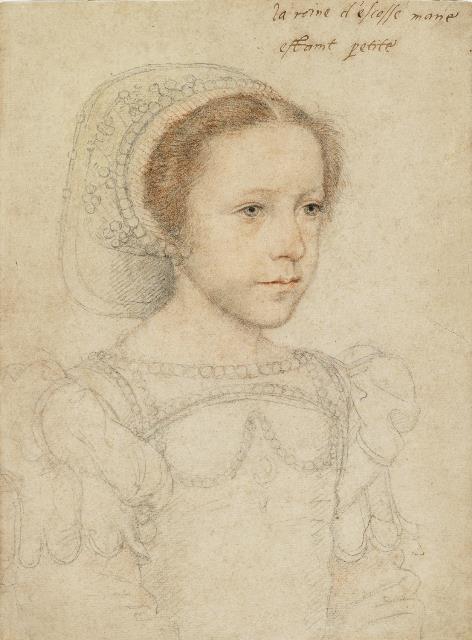
(Mary I in childhood, as painted by Clouet. Not my picture)
Selected references:
Acts of the Parliaments of Scotland
“Acts of the lords of council in public affairs, 1501-1554: Selections from the Acta dominorum concilii”, ed. R.K. Hannay
“Scottish Correspondence of Mary of Lorraine”, ed. Annie Dunlop
“Letters and Papers, Foreign and Domestic of the Reign of Henry VIII”, Volumes 17 and 18, ed. James Gairdner and R. H Brodie.
“The Hamilton Papers”, Vol. II, ed. Joseph Bain
The various histories of John Leslie, George Buchanan, Robert Lindsay of Pitscottie and John Knox- all of which can be found online but as only Lindsay was really useful, forgive me for not citing them properly here
“Mary of Guise”, by Rosalind Marshall
“Mary Queen of Scots”, by Antonia Fraser
“The Rough Wooing”, by Marcus Merriman
“Glory and Honour”, by Andrea Thomas
“Life of Mary Queen of Scots”, by Agnes Strickland (I hate admitting it but I do have to credit her)
And others
#Scottish history#Mary Queen Of Scots#Scotland#British history#women in history#sixteenth century#Mary of Guise#Cardinal Beaton#Regent Arran#Henry VIII of England#stirling castle#Linlithgow Palace#Blackness Castle#Callendar House#the Stewarts#coronation#today in history
88 notes
·
View notes
Text
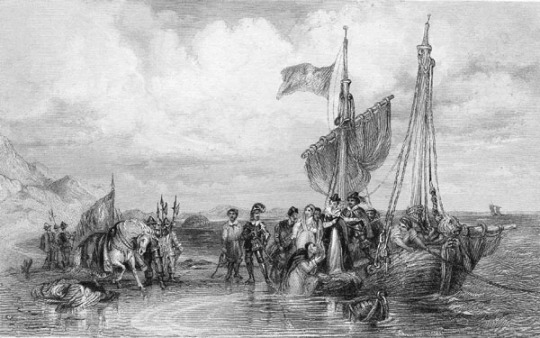
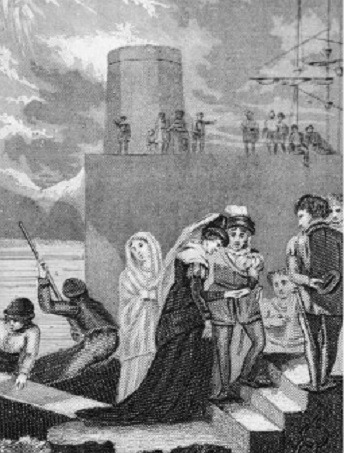
On 16th May 1568, a small fishing boat carrying Mary Queen of Scots set sail from Scotland for English shores, she would spend the rest of her life in various locations, never to set foot in Scotland again.
Days after the defeat at Langside Mary Stuart decided her only option was to fee south. Her supporters begged her to stay in Scotland or head for Catholic France. But she was convinced that Elizabeth – her cousin, and like her an anointed monarch – would help her raise an army to return to Scotland in triumph. Before leaving Scotland she wrote to Elizabeth requesting a meeting and sending a diamond ring as a token of her friendship. Without waiting for a reply, she and 16 supporters made the four-hour crossing of the Solway Firth (the strait that forms part of the border between England and Scotland).
Mary had watched her army soundly beaten by an army led by her half brother, James Stewart, 1st Earl of Moray, she would flee the scene and later write, to a relative in France;
“I have endured injuries, calumnies, imprisonment, famine, cold, heat, flight not knowing wither, ninety two miles across the country without stopping or alighting, and then I have had to sleep upon the ground and drink sour milk, and eat oatmeal without bread, and have been three nights like the owls.”
Such a fall from grace for our beautiful Queen, Mary at the time was only 25.
On 18th May, local officials took her into protective custody at Carlisle Castle. Mary spent just eight weeks at Carlisle Castle, from 18 May to 13 July 1568, with Sir Francis Knollys as her custodian. Although Mary was permitted to take walks outside the castle walls with her ladies, and walk the stretch of castle walls that later became known as ‘the lady’s walk’, the other limitations placed upon her movements (such as the fact that she couldn’t travel elsewhere or receive guests without the permission of Elizabeth I) were a foreshadowing of the long years of imprisonment to come.
Mary was kept in Queen Mary’s Tower, which was largely demolished in 1834 due to its unsafe condition and is now a ruin. As the original Norman entrance this was one of the oldest parts of the castle. Mary arrived after a four-hour crossing of the Solway Firth with her retinue, and she expected that her stay at the castle would be a short one – believing she was simply awaiting the help of her cousin Elizabeth I who would help her to regain the throne. Sadly for Mary, this ill-advised plan was to lead to her being imprisoned for the rest of her life.
Although Mary wrote to a supporter soon after her arrival that she had been ‘right well received and honourably accompanied and treated’ whether or not she realised it at this point, she was a prisoner, and was being kept under armed guard. Sir Francis Knollys was sent north from London by Elizabeth I to be Mary’s keeper and although he described her as ‘pleasant’ he was under pressure not to allow his royal prisoner to escape.
For the next nineteen years our unfortunate Queen was lodged in various castles and mansions around England.
The pics show her departing and the arrival on either side of the Solway Firth.
23 notes
·
View notes
Text
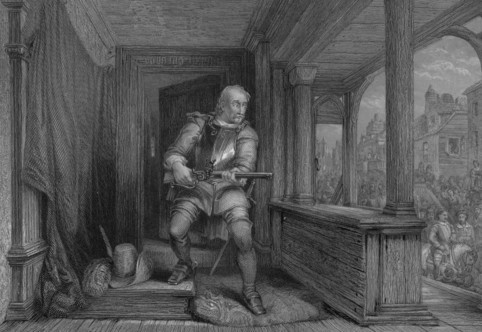
On this day in history (Jan. 23, 1570) James Stewart, 1st Earl of Moray who was the illegitimate son of King James V & the Regent of Scotland for his half-nephew, the infant King James VI, was assassinated by James Hamilton of Bothwellhaugh & Woodhouselee in Linlithgow, Scotland. This was the first recorded assassination of a head of government by firearm. The firearm used was a brass match-lock carabine with a rifled barrel for improved accuracy.
4 notes
·
View notes
Text
Events 1.23 (before 1920)
393 – Roman emperor Theodosius I proclaims his eight-year-old son Honorius co-emperor. 971 – Using crossbows, Song dynasty troops soundly defeat a war elephant corps of the Southern Han at Shao. 1264 – In the conflict between King Henry III of England and his rebellious barons led by Simon de Montfort, King Louis IX of France issues the Mise of Amiens, a one-sided decision in favour of Henry that later leads to the Second Barons' War. 1368 – Zhu Yuanzhang proclaims himself the Hongwu Emperor, beginning the Ming dynasty. 1546 – Having published nothing for eleven years, François Rabelais publishes the Tiers Livre, his sequel to Gargantua and Pantagruel. 1556 – The deadliest earthquake in history, the Shaanxi earthquake, hits Shaanxi province, China. The death toll may have been as high as 830,000. 1570 – James Stewart, 1st Earl of Moray, regent for the infant King James VI of Scotland, is assassinated by firearm, the first recorded instance of such. 1571 – The Royal Exchange opens in London. 1579 – The Union of Utrecht forms a Protestant republic in the Netherlands. 1656 – Blaise Pascal publishes the first of his Lettres provinciales. 1719 – The Principality of Liechtenstein is created within the Holy Roman Empire. 1789 – Georgetown College, the first Catholic university in the United States, is founded in Georgetown, Maryland (now a part of Washington, D.C.) when Bishop John Carroll, Rev. Robert Molyneux, and Rev. John Ashton purchase land for the proposed academy for the education of youth. 1793 – Second Partition of Poland. 1795 – After an extraordinary charge across the frozen Zuiderzee, the French cavalry captured 14 Dutch ships and 850 guns, in a rare occurrence of a battle between ships and cavalry. 1846 – Slavery in Tunisia is abolished. 1849 – Elizabeth Blackwell is awarded her M.D. by the Geneva Medical College of Geneva, New York, becoming the United States' first female doctor. 1870 – In Montana, U.S. cavalrymen kill 173 Native Americans, mostly women and children, in what becomes known as the Marias Massacre. 1879 – Anglo-Zulu War: The Battle of Rorke's Drift ends. 1899 – The Malolos Constitution is inaugurated, establishing the First Philippine Republic. Emilio Aguinaldo is sworn in as its first president. 1900 – Second Boer War: The Battle of Spion Kop between the forces of the South African Republic and the Orange Free State and British forces ends in a British defeat. 1904 – Ålesund Fire: The Norwegian coastal town Ålesund is devastated by fire, leaving 10,000 people homeless and one person dead. Kaiser Wilhelm II funds the rebuilding of the town in Jugendstil style. 1909 – RMS Republic, a passenger ship of the White Star Line, becomes the first ship to use the CQD distress signal after colliding with another ship, the SS Florida, off the Massachusetts coastline, an event that kills six people. The Republic sinks the next day. 1912 – The International Opium Convention is signed at The Hague. 1919 – The First Regional Congress of Peasants, Workers and Insurgents is held by the Makhnovshchina at Velykomykhailivka.
0 notes
Photo








Women’s History Meme || Happy Marriages (5/5) ↬ James Stewart, 1st Earl of Moray and Agnes Keith
The choice of Lady Agnes Keith as Lord James’s bride was equally provocative, as the Keiths were also rivals of the Gordons, Huntly’s family. This was not, however, a match prompted solely by political ambition and the sizeable dowry that his new wife brought with her. Agnes and Lord James seem to have been genuinely in love. They had known each other for some time – she was then aged twenty-two and he thirty – and became a very happy couple. The countess of Moray, one of a family of eleven children, was a formidably capable woman as well as an attractive one. Nobly born, she appreciated the importance of playing her part, both in the way that she dressed and her frequent appearances at court. A firm favourite with her sister-in-law, the queen, their friendship survived the anguish of Mary’s eventual split with her half-brother. —Tudors Versus Stewarts: The Fatal Inheritance of Mary, Queen of Scots, Linda Porter
#women's history meme#james stewart#house of stewart#agnes keith#scottish history#european history#women's history#history#nanshe's graphics
16 notes
·
View notes
Photo

January, 23 #onthisday 393. Roman Emperor Theodosius I proclaims his eight-year-old son Honorius co-emperor. 1570. James Stewart, 1st Earl of Moray, regent for the infant King James VI of Scotland, is assassinated by firearm, the first recorded instance of such. 1846. Kingdom of Tunisia, The first country in the world to abolish slavery. Decision taked by Ahmed becha bey, the bey of Kingdom of Tunisia. 1849. Elizabeth Blackwell becomes 1st woman in the US to earn a medical degree. 1879. Anglo-Zulu War: The Battle of Rorke's Drift between the British Empire and the Zulu Kingdom, ends. 1899. The Malolos Constitution is inaugurated, establishing the First Philippine Republic. Emilio Aguinaldo is sworn in as its first President. 1900. Second Boer War: The Battle of Spion Kop between the forces of the South African Republic and the Orange Free State and British forces ends in a British defeat. 1904. Ålesund Fire: The Norwegian coastal town Ålesund is devastated by fire, leaving 10,000 people homeless and one person dead. Kaiser Wilhelm II funds the rebuilding of the town in Jugendstil style. 1963. The Guinea-Bissau War of Independence officially begins when PAIGC guerrilla fighters attack the Portuguese army stationed in Tite. 1997. Madeleine Albright becomes the first woman to serve as United States Secretary of State. #humanhistoricalstories #history #photographie #onthisdayinhistory #otd #thisdayinhistory #todayinhistory #historygeek #worldhistory #theodosiusi #honorius #elizabethblackwell #tunisia #tunisie https://www.instagram.com/p/CKYuRQ5FhI0/?igshid=1w4b600ynzhpv
#onthisday#humanhistoricalstories#history#photographie#onthisdayinhistory#otd#thisdayinhistory#todayinhistory#historygeek#worldhistory#theodosiusi#honorius#elizabethblackwell#tunisia#tunisie
1 note
·
View note